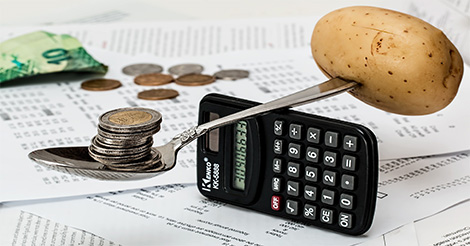Any wholesale distribution business that buys and sells inventory knows the importance of assigning the right dollar value to the inventory items - especially in an industry where large quantities of product are sold at a time. Inventory costing methods can vary from business to business depending on the unique needs of the company. In general, there are four main inventory costing methods, each with their own advantages and disadvantages. They are specific identification, first-in, first-out (FIFO), last-in, first-out (LIFO), and weighted-average cost. In this post, we’re going to be focusing on the two most commonly used and accepted inventory costing methods, FIFO and Average Cost.
FIFO and Average Cost inventory valuation methods offer businesses flexibility in their financial reporting, however, there are a few things to consider when choosing the method to adopt. One thing to consider is cash flow implications. Businesses need to evaluate what their cash flow will look like in the coming years and also consider the actual flow of inventory before choosing a costing method. This is especially important if the inventory does flow in a specific manner (such as FIFO method for non-durable goods like dairy products or fruits and vegetables). More on this below.
FIFO Costing
As the name suggests, the FIFO costing method is set up so that the oldest items in your inventory are sold first and corresponds to the actual physical flow of goods in your warehouse. This is particularly useful for companies who want to avoid large losses due to spoilage - for example, distributors selling dairy products, fresh fruits and vegetables, should use the FIFO accounting method so that items are sold according to the earliest expiration date.
FIFO methods of accounting are also preferred by many wholesale distribution businesses because it provides a more accurate picture of the cost of an item based on its timeline, meaning the price paid at the time of purchase. This can be an advantageous costing method for wholesale distributors as it takes into consideration any cost differences in periodic inventory purchases which will maximize the net income.
Let's say, for example, wholesale distributor, "ABC" bought 100 shirts over two different time periods.
ABC bought 100 t-shirts for $20 each on August 1.
ABC bought 100 of the same t-shirts for $30 each on August 20.
They sold 50 t-shirts on August 25th.
With the FIFO method, those 50 shirts sold by ABC, would come from the first batch of t-shirts that are valued at $20 each. The remaining 50 t-shirts from that same batch (also valued at $20 each) and 100 t-shirts at $30 each get recorded on the balance sheet as remaining inventory. The FIFO method accounts for the price differences in batch 1 and batch 2.
However, there are drawbacks to the FIFO method. There is a heavier tax burden if the method is used in periods of inflation as older items in inventory do not account for any market increases.
Weighted-Average Costing Method
Under the average cost method, businesses are able to set a standard cost for items in inventory, regardless of what the amount paid when the actual item is purchased. The clear benefit of the weighted-average method is that it is very simple to manage as it does not track when the item was sold like FIFO. Instead, it only considers the amount of inventory in total dollar value and the quantity in stock for each inventory item. This method is good for wholesale distribution companies that want to standardize pricing across inventory batches.
Let's take a look at the t-shirt example again...
ABC bought 100 t-shirts for $20 each on August 1.
ABC bought 100 of the same t-shirt for $30 each on August 20.
They sold 50 t-shirts on August 25th.
The average costing method looks at the value of the inventory in total - each t-shirt would be calculated as a total of the overall value.
So, the $5,000 paid by ABC for all the t-shirt inventory (100 x 20) + (100 x 30) = $5,000 would then be divided by the total number of t-shirts in stock to calculate the average cost of the t-shirt. In this case, the average cost would be $25 per shirt.
So when they sell 50 t-shirts they would price it based on the average price of $25. The remaining t-shirts would all also be valued at the average price of $25.
While this is a fairly simple calculation to maintain, one of the disadvantages of this method is that the average cost does not match or account for any inventory flow. If inventory prices vary widely depending on how much was paid per each round of purchases, the average cost may not recover the costs of the more expensive items that were purchased. The ideal situation, in this case, would be for company ABC to make up the loss when the t-shirts from the less expensive batch get sold.
Don't Forget Landed Costs
When recording the cost of inventory, it is important to also include any indirect costs or "non-vendor costs" associated with the purchase of that product to gain an accurate cost of goods. These indirect costs account for the movement of inventory and include fees such as:
- Brokerage
- Freight
- Custom and duties
- Insurance
- Storage
- Shipping charges
- Packaging
Automate FIFO, Average Cost, Landed Costs with Blue Link Distribution Accounting Software
Blue Link distribution accounting software uses Average Cost and FIFO costing methods to accurately manage product costs. No matter which costing method and strategy you choose, Blue Link tracks all costing data behind the scenes so you can change your preferred method if your business processes change in the future. You can also add landed costs to supplier costs which includes the freight, storage, shipping etc.,fees that you pay per item, to get an accurate price per item.










